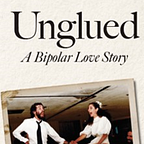Dateline, Minneapolis: Old Jewish White Guy’s Mental Health Update
Thirty-five years ago my wife and I lived three blocks from Cup Foods in South Minneapolis, where we bought milk and where George Floyd was murdered last week. Later on we bought a house a few blocks east of there, past the Dairy Queen, and then another house near Cedar Lake on the western edge of Minneapolis. Our two kids graduated from Minneapolis South High School, a ten-minute walk from where you saw the Third Precinct police station burn down.
Our daughter and her family now live in Uptown Minneapolis. The supermarket two blocks from their apartment was ransacked last week. For safety’s sake, on Saturday night my daughter and her toddler slept over at our house while my son-in-law stayed home, and I spent the night fearing their building would burn down.
The same day that George Floyd couldn’t breathe, about three miles away, vandals painted swastikas and “Trump 2020” graffiti at a bus stop outside our synagogue. I grew up in Pittsburgh and occasionally attended the Tree of Life Synagogue, where in 2018 some white guy shot seventeen Jews, which makes me anxious about the Goons who’ve been driving around the Twin Cities and the suburbs for the past week in stolen cars without license plates or identifying chrome insignias. A white guy from Illinois came up here and filmed himself handing out explosive devices and posted it on Facebook. Sunday evening I saw and heard a drone buzzing over our neighborhood. I wasn’t sure if it was a good-guy drone or a bad-guy drone or, at this point, what the difference is.
Arsonists have left pharmacy deserts in Minneapolis and St. Paul where the mayhem took place. Four Walgreen’s and a CVS within a couple miles of my daughter’s place were ransacked or burned. Our public transportation has been shut down for the last week. A friend of a friend in St. Paul found out the nearest drugstore that had the meds she needed was 20 miles away in the far southern suburbs.
All that has added up to this 65-year-old white Jewish guy’s case of situational anxiety. I let my doc know I was having the same adrenaline-fueled symptoms I had when my wife was manic: shallow breathing, quickened heartbeat, rumbling stomach, sleepless fear. My wife, who’s doing well managing her bipolar disorder, picked up a month of Ativan for me in a nearby suburban pharmacy, one that hadn’t been torched.
Which made me the luckiest white guy on the face of the earth.
It’s been nearly 20 years since the Surgeon General published “Mental Health: Culture, Race, and Ethnicity,” documenting gross disparities between access to mental health services between whites and nonwhites.
Executive Summary: Mental health access sucks for whites. Access for nonwhites sucks even worse.
The National Alliance on Mental Health (NAMI) has a list of eight causes for mental health disparities, including poor availability of care, transportation problems, stigma, cultural and language barriers, racism, and crummy health insurance.
NAMI itself has its own work to do. I attend a pair of monthly NAMI support groups for spouses and partners of those living with a mental illness. Nearly everyone who attends our Twin Cities groups is white. Until the pandemic, we met in churches in white neighborhoods. Now we talk over Zoom about our white experiences and white problems with our white partners’ mental illnesses, which for us are brutal and largely not a specific result of systemic racism but of some terrible mental health problems and a dysfunctional mental health system to treat them.
Mental health, of course, is just one aspect of racial health disparities in this country.
Quartz has a remarkable interactive map showing average life expectancy by neighborhoods in cities across the country. It’s a cool map, depending on your neighborhood. I’m 65. Statistically speaking, in my white neighborhood I’m apparently in the seventh inning stretch in my lifespan. (My chain-smoking father died young in the bottom of his sixth inning.) Three or four miles away, over by my kids’ high school where you saw the fires burning last week, a guy my age would be batting in the bottom of his ninth inning with two outs and nobody on base.
If you’re looking for hope in all this, here are a couple things:
The community response to all this reminds me of why I want to live in the Twin Cities. One example: The response to a call for food donations at a junior high on the south side last weekend was so overwhelming that donors couldn’t get closer than eight blocks through the traffic.
I know, whoop-de-doo. That doesn’t cure our horrible police union or the racial, economic, and educational injustice that led up to these disparities.
But it ain’t a bad start for a city in tears.
Closer to home: It’s been nine months since my wife’s last episode of a four-year cycle of mania and depression. She’s got good docs, good meds, and the good fortune of being white. She spent the weekend weeding our garden and doing a dozen other things around the house while I laid on my ass staring at the Sunday Times crossword puzzle.
It’s almost like I should be going to her support group this week and she should be attending mine.
But I’ll be all right. Like we say in our NAMI support group meetings, we will never give up hope. My hope and faith and good luck have helped me get through my wife’s illness.
Hope and faith and good luck have helped my people avoid thousands of years of existential annihilation.
Or is that something only a lucky old white guy might say?
